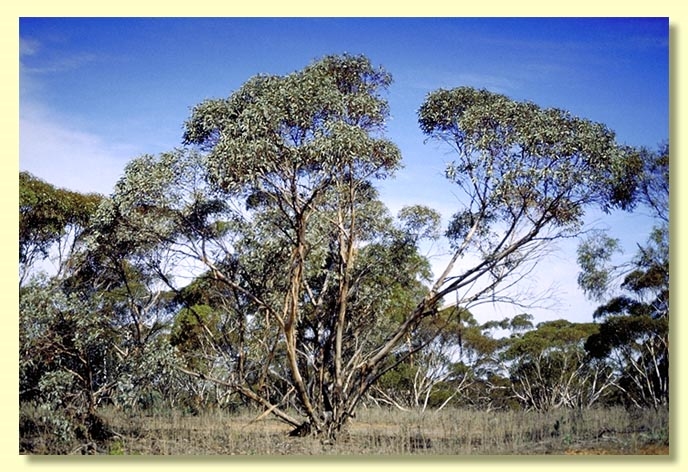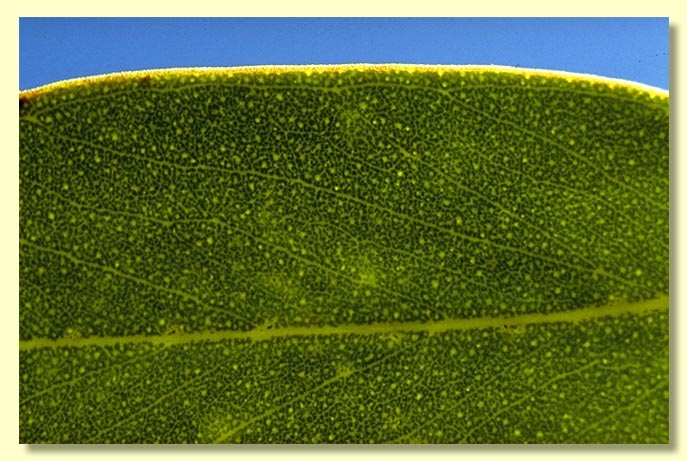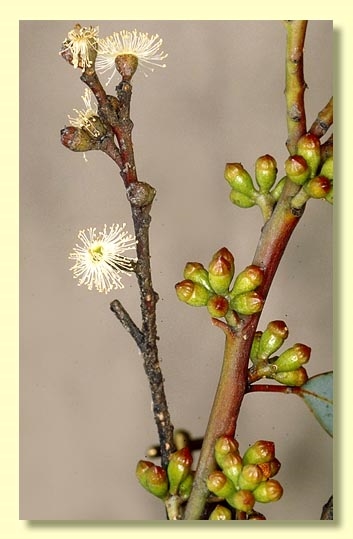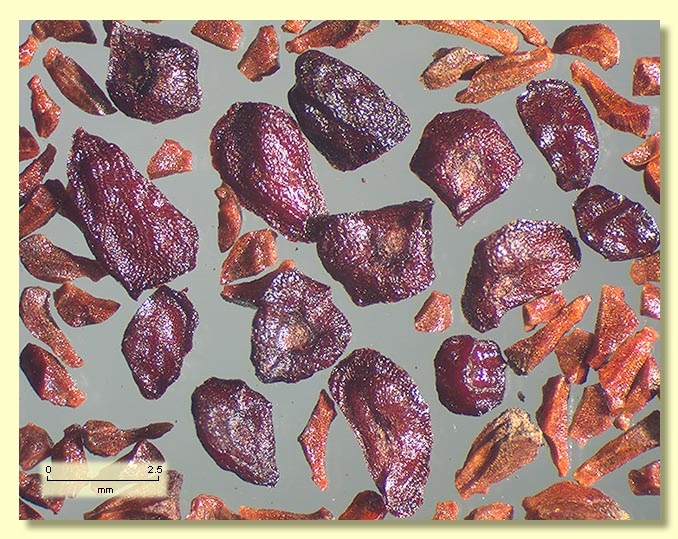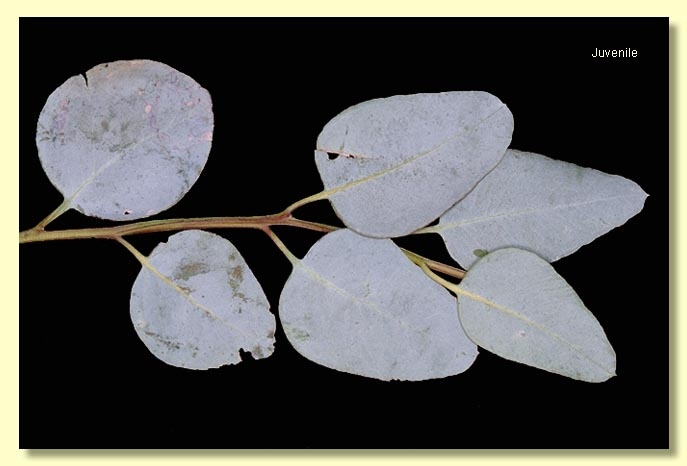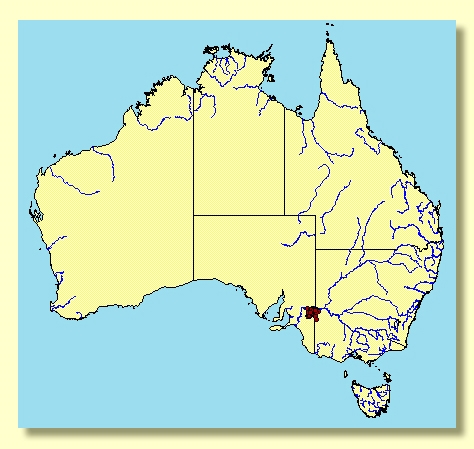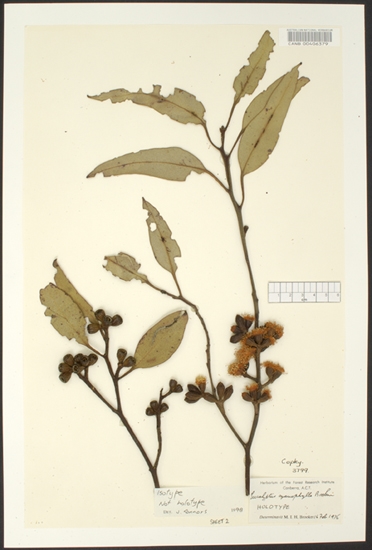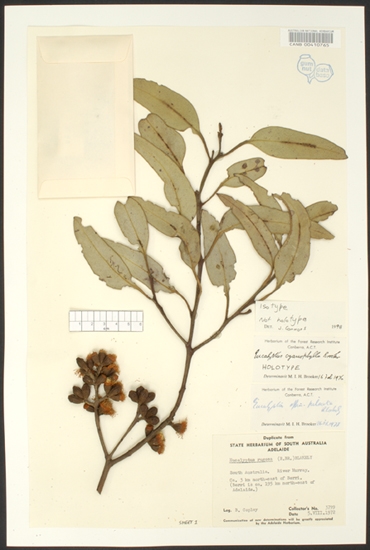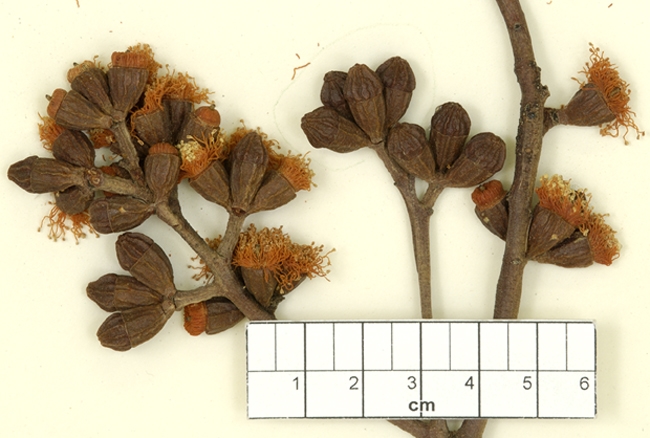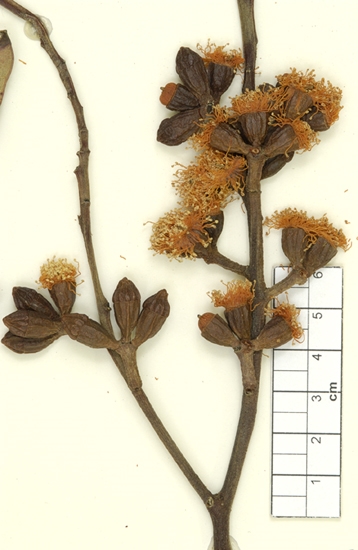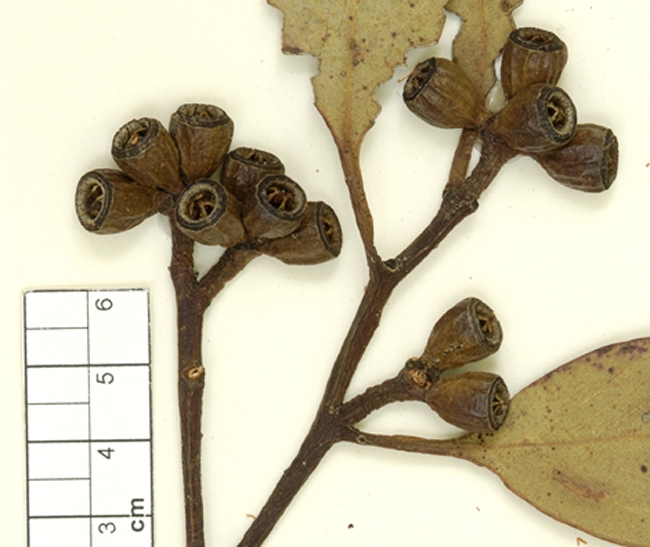Euclid - Online edition
Eucalyptus cyanophylla
Eucalyptus | Symphyomyrtus | Dumaria | Rufispermae
Bark smooth or with a ragged stocking of partly shed grey or red-brown strips on lower stems; smooth bark pink to brown, or white to grey or orange-brown, often with ribbons of decorticated bark in the upper branches.
Branchlets with oil glands in the pith.
Juvenile growth (coppice or field seedlings to 50 cm): stem rounded or square in cross-section; juvenile leaves always petiolate, opposite until node 5 or 6, becoming alternate, elliptic to broadly ovate, ultimately lanceolate, 6–12 cm long, 2.5–7 cm wide, concolorous, thickish, grey-blue, usually only glaucous on new growing tips.
Adult leaves alternate, petiole 1.5–2.7 cm long; blade broadly lanceolate to lanceolate or falcate, 7–16 cm long, 1.7–3.5 cm wide, base tapering to petiole, concolorous, dull, grey-blue, side-veins acute, densely reticulate with erose veinlets, intramarginal vein parallel to and just within margin or well removed from it, oil glands scattered, large, mostly intersectional.
Inflorescence axillary unbranched, peduncles 0.5–1.3 cm long, buds 7 per umbel, shortly pedicellate to subsessile (pedicels 0.1–0.3 cm long). Mature buds oblong (0.7–1.3 cm long, 0.5–0.8 cm wide), green to yellow to red, scar present, operculum shortly beaked to conical, rounded or turban-shaped, longitudinally striate (0.35–0.6 cm long), stamens inflexed, anthers cuboid to wedge-shaped, versatile, dorsifixed, dehiscing by longitudinal slits (non-confluent), style long, stigma blunt, locules 4 or 5 each with 4 vertical ovule rows. Flowers white.
Fruit sessile or pedicellate (pedicels (0)0.1–0.3 cm long), cup-shaped, obconical, hemispherical or barrel-shaped, 0.6–1 cm long, 0.7–1 cm wide, usually ribbed longitudinally, disc descending, valves 4 or 5, near rim level (scarcely protruding).
Seeds reddish brown and glossy, 1–3 mm long, ovoid or flattened-ovoid, dorsal surface shallowly pitted, hilum ventral.
Cultivated seedlings (measured at ca node 10): cotyledons reniform; stems square in cross-section; leaves always petiolate, opposite for 4 or 5 nodes then alternate, ovate, 4–12.5 cm long, 1.8–6.5 cm wide, base tapering, dull, blue-grey.
Flowering has been recorded in August, September and October.
A mallee of north-western Victoria and the northern Murray Mallee of South Australia, including north of the River Murray, usually on sand on higher ground in what is relatively flat country.
In the classification of Brooker (2000) Eucalyptus cyanophylla belongs in Eucalyptus subgenus Symphyomyrtus section Dumaria having these features: buds initially with two opercula the outer shed early, stamens strongly inflexed, ovules in 4 rows on the placentae and cotyledons reniform. Within section Dumaria the species belongs to a large sub-group of closely related species (series Rufispermae, 37 described species and subspecies) diagnosed by glandular pith in the branchlets, anthers cuboid to wedge-shaped, versatile, and by the reddish brown and glossy, flattish seeds which are unique to the series.
E. cyanophylla occurs with or near the related E. dumosa, which usually occurs on harder more loamy soils and flats. E. cyanophylla differs in its broader leaves, and wider buds and fruit. Adult leaves of E. cyanophylla are dull bluish grey, while those of E. dumosa are dull, light green, maturing slightly glossy inside the crown. A third species from series Rufispermae, E. phenax subsp. phenax occurs a little to the south and is easily distinguished by its strikingly glossy leaved crown. All three species have oil glands in the pith of the branchlets which distinguishes them from other mallee species in the area.

